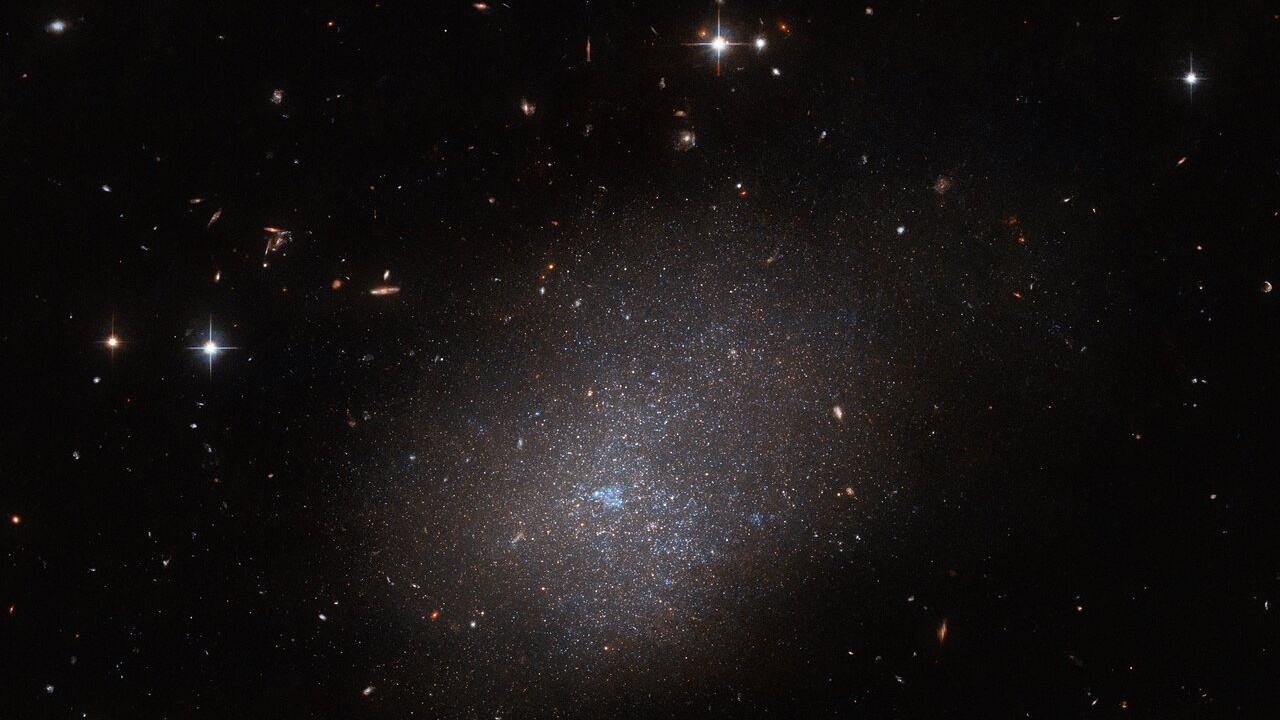
A distant galaxy sparkles from the soft glow of its many tiny stars in a new photo from the Hubble Space Telescope.
The galaxy, named ESO 300-16, is located about 28.7 million light-years away from Earth in the Eridanus constellation and appears as a celestial cloud of sparkling stars against the dark backdrop of space. Other galaxies and stars are also featured in the new Hubble image, providing a captivating view of this cosmic neighborhood.
"The galaxy ESO 300-16 looms over this image," European Space Agency (ESA) officials said in a statement about the image on Monday (Aug. 21), adding that it "is a ghostly assemblage of stars which resembles a sparkling cloud."
Related: The best Hubble Space Telescope images of all time!
This recent view of ESO 300-16 was taken using the Advanced Camera for Surveys instrument on the Hubble Space Telescope, which is a joint mission led by NASA and ESA. It is part of a series aimed at surveying Earth's galactic neighbors.
"Around three quarters of the known galaxies suspected to lie within 10 megaparsecs [32 million light-years] of Earth have been observed by Hubble in enough detail to resolve their brightest stars and establish the distances to these galaxies," ESA officials said in the statement. "A team of astronomers proposed using small gaps in Hubble's observing schedule to acquaint ourselves with the remaining quarter of the nearby galaxies."
ESO 300-16 is classified as an irregular galaxy due to its indistinct shape and lack of nuclear bulge or spiral arms. Instead, it resembles the shape of a cloud, comprised of many tiny stars all clumped together.
The stars give off a soft, diffuse light that surrounds a bubble of bright blue gas at the galaxy's core. The brighter, foreground objects represent nearby stars and galaxies, according to the statement.
!["[T]he First and Fifth Amendments Require ICE to Provide Information About the Whereabouts of a Detained Person"](https://images.inkl.com/s3/publisher/cover/212/reason-cover.png?w=600)






